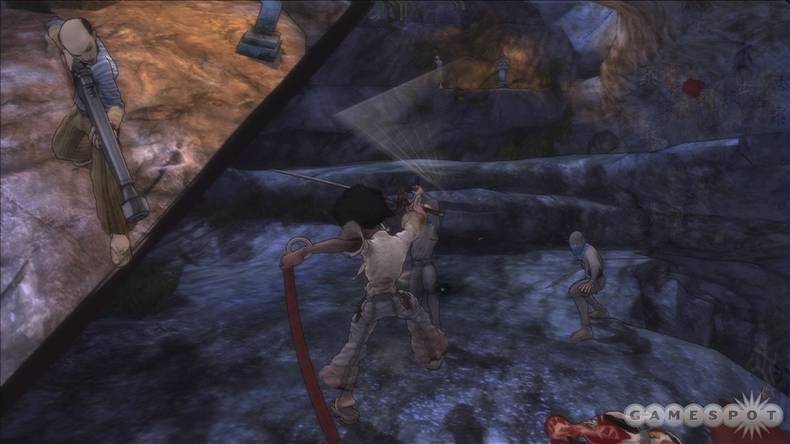Despite a slightly shallow nature, six-plus hours of kaleidoscopic action make Atari’s new release worthy of a week’s rental.
Afro Samurai is a serialised comic strip turned into a popular and award-winning animated series. The strip was inked by Takashi Okazaki, who spent his teenage years learning to draw African American characters from blaxploitation films and literature. Afro Samurai is now a video game, and it shares the bad-tempered animation and bloodlust of its predecessor with us nervous types, who should probably not be playing it.
As the result of a heavily stylized Yojimbo-cum-Dolomite art direction, it looks superb. The characters have a gleeful cartoon feel about them, it’s colourful to a fault, and the player character uses the blood on his sword as a gruesome paintbrush. I found myself making favourable comparisons with Okami, my favourite Nintendo Wii title.
The health and boost display are great, because everything a player needs is represented in the animation: blood on the screen replaces a combo metre, characters look tired and bloody when almost beaten, and powers can be activated when Afro Samurai’s pendant glows.
Sound is sampled directly from the TV programme and seems crisper than its DVD companion. Having played the game on PS3 before Xbox 360, I did note that the Bluray seemed to suit the music more than its Microsoft counterpart on a 5.1 system. However, this is a small thing, as the music style and area effects are compelling.
In combat, the player character follows the familiar path of war trodden by genre champions like Devil May Cry (2001). Button combinations and their effects are imparted to the player on a very relaxed learning curve, to the extent that I felt like the game was doing a bit of hand-holding. This x-y-b-y mechanic seems to be a little on the old side, there are terrible platforming sections and the action does not seem to bear the story too well.
Summary: It is a poor “game” when you apply to it the standards of some beat-em-ups, but the visuals are enough to get around this.
Weaker: Wu-Tang Taste the Pain (1999)Stronger: God Hand (2007), Marvel vs Capcom (1998)
